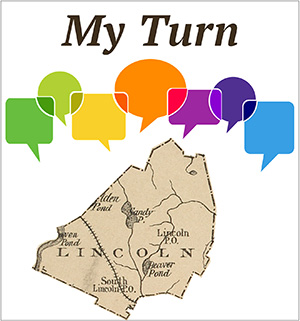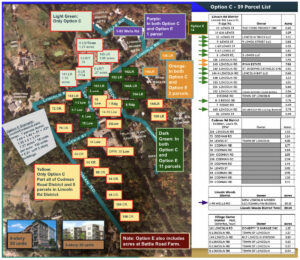By Barbara Slayter
Over the years, there has been a lot of discussion about the pros and cons as well as the specific characteristics of a community center that we might eventually have in Lincoln. Three contributions to the Lincoln Squirrel’s “My Turn” in recent weeks have shaped my thinking about how to vote at Saturday’s Special Town Meeting. They are Ellen Shorb’s “How would you use a community center?,” Dilla Tingley’s “A community center for Lincoln” and David Levington’s “How about equity for seniors?”
Ellen’s delightful essay encouraged us to imagine possibilities. The question she posed was not “How would I use a community center in Lincoln right now?” but rather “How might I have used it when I first moved to Lincoln with four young children?” and “How might I use it in the near future?” Her lively responses led me to reflect on these same questions for myself. How might I have used a community center at different stages in my life? What opportunities could have existed in the past and what might be available in the future? It is intriguing to speculate!
Dilla’s essay led me to ponder another set of questions. We are not talking about a senior center. We are talking about a community center that will serve the whole community — seniors, school children, and everyone in between. LEAP will be ensconced in the community center as planned, but more than that, the building will be accessible to all ages, interest groups, and organizations in the community in the way that the facilities at Bemis Hall (much as I treasure them) simply can’t accommodate. If you have ever tried to schedule a discussion group at Bemis or a public meeting with your state representative, you know the pressure that exists on use of those spaces.
With an “edge” about seniors being left out, David asks us to look at the big picture. Given three options to consider, he (and almost everyone else) writes off the least expensive as being unacceptable, a structure totally inadequate for addressing the programmatic and administrative needs of the COA&HS and Parks and Recreation.
He then looks at the tax implications of the remaining two choices and determines that, from his perspective, the difference is not large. Why not, he asks, take the step to create a structure that will serve us well over a long period of time? “Why not?” I ask myself. This might be an opportunity not to be missed. Who knows when it will come again.
I would also add another thought. Isolation and loneliness are widely regarded as significant concerns in contemporary American life. Across the country approximately 30% of households have only one adult in residence.
In Lincoln, a significant number of adults live alone. While this may be especially true for seniors, it is also the case for all age groups. I can well imagine the benefits of a gathering place where residents can get together informally, at will, and as need be for casual interactions over a cup of coffee or planned discussions, activities, or events.
How special to have a place to go without invitation, or pre-arrangements, or pre-programming. Just turn up! This is my community, my center, and I, along with everyone else in this community, am welcome. And if it is beautiful, spacious, and accommodating, so much the better.
“My Turn” is a forum for readers to offer their letters to the editor or views on any subject of interest to other Lincolnites. Submissions must be signed with the writer’s name and street address and sent via email to lincolnsquirrelnews@gmail.com. Items will be edited for punctuation, spelling, style, etc., and will be published at the discretion of the editor. Submissions containing personal attacks, errors of fact, or other inappropriate material will not be published.

